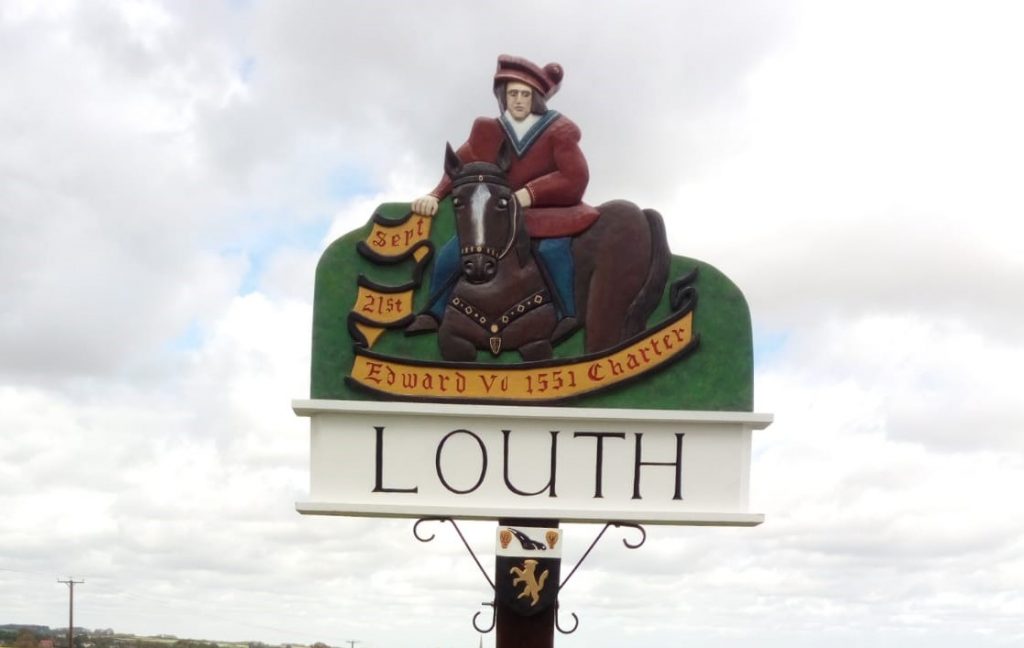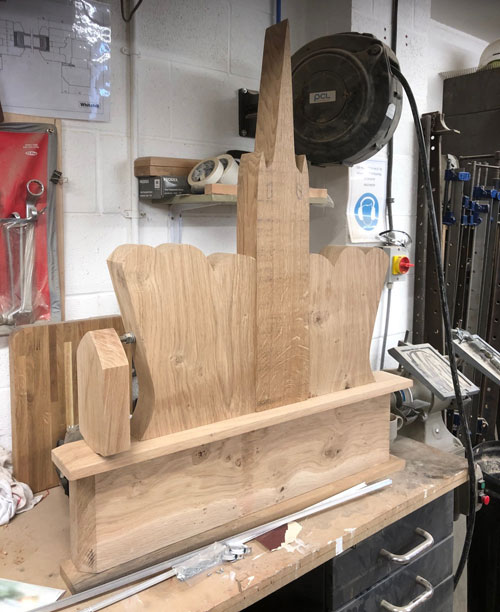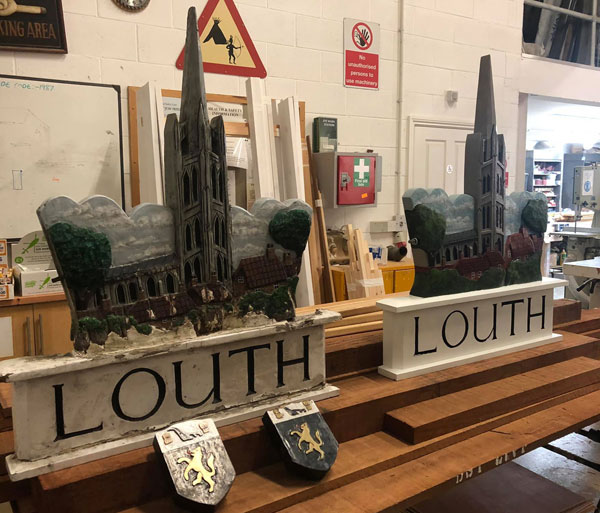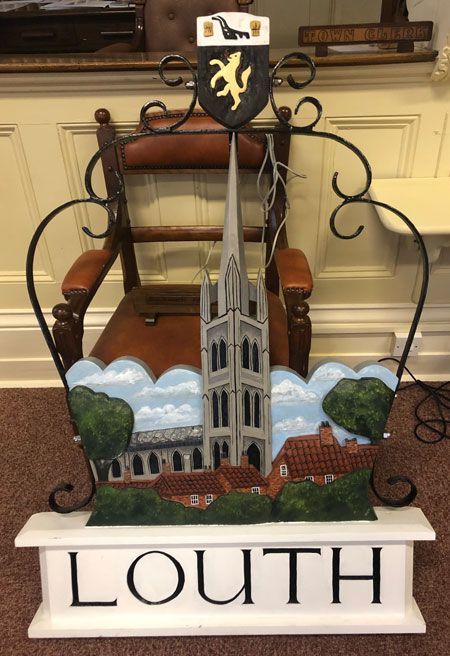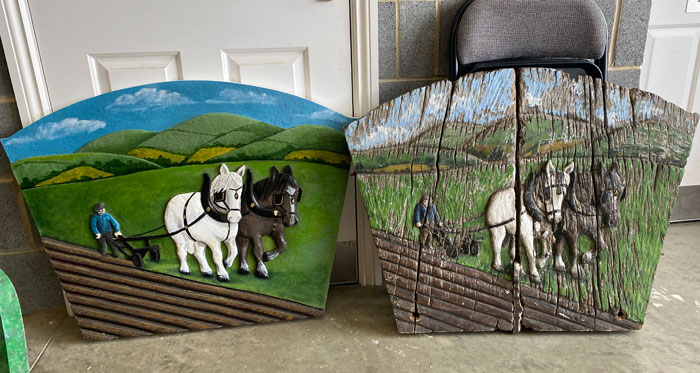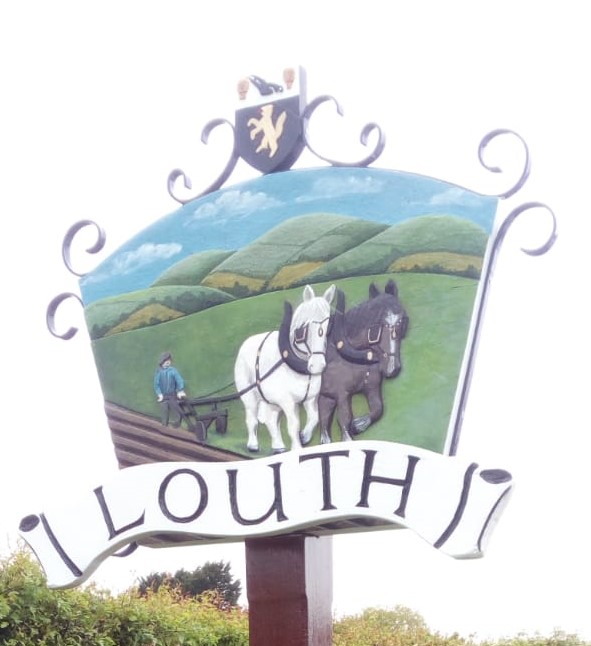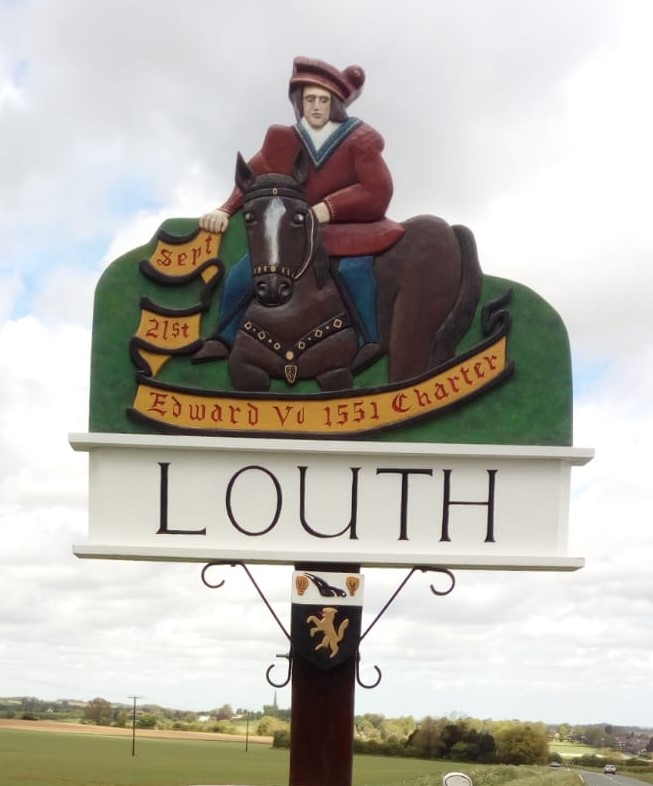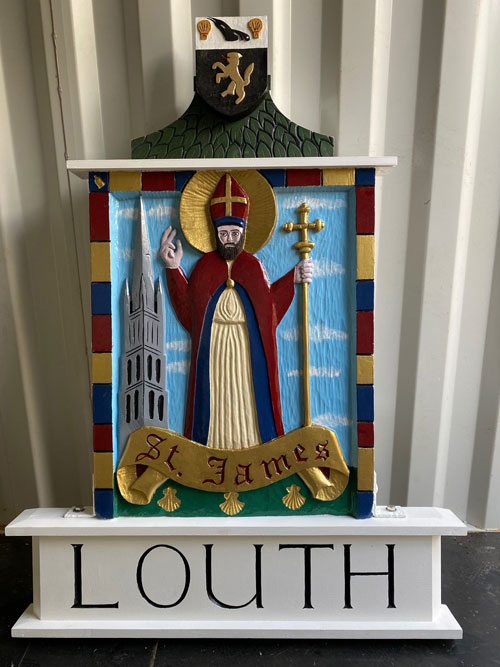While travelling in and out of Louth you could perhaps be forgiven for having taken little notice of the attractive roadside signs which stand at the seven entrances to the town, for we are so used to them being there. The signs have braved all types of weather since 1967, when they were first erected, but exposure to over 50 years of rain, storms, snow and sun meant that their condition had gradually declined.
In 2019 Louth Town Council took the decision to have all 7 of the town’s unique, oak, hand carved and hand painted signs refurbished and, in some cases, this has meant completely remaking them. Over the past nine months Rodden and Cooper, working closely with Gillick Studios, have been undertaking this painstaking, intricate and highly skilled project and the Council is pleased to confirm that several of Louth’s signs have now been completed and have been placed back in position. These are located on the approaches to the town at the junction of St. Mary’s Lane with the B1200, the A16 (from Grimsby), Legbourne Road and London Road. Soon to be refurbished are those remaining which mark the entrance to Louth on Brackenborough Road, Eastfield Road and Horncastle Road.
The signs, a welcome reminder that Louth is near, were originally designed to acquaint residents and visitors alike with the town’s religious, historic and agricultural background. A tour of them reveals the following:
- Our closeness to Mother Earth is represented by the charming farming sign, a ploughman and his pair, on Legbourne Road.
- Homage is paid on both the London Road and the Eastfield Road approaches to one of the most historic dates in the town’s history, 21st September 1551. This is when King Edward VI signed a Royal Charter, establishing a Corporation of one Warden and six Assistants to govern the ancient grammar school and Bedehouses and to manage the market and fairs. In granting the Charter, the King recognised Louth as a place of learning.
- The sign on Brackenborough Road shows St. Herefrid, to whom our Parish Church was probably first dedicated. This icon illustrates the longevity of the Christian tradition in Louth and could be taken as a symbol of hope for the future. Little of St. Herefrid’s origins are known but a shrine must have been built for him at Louth as mention is made in an 11th century account of a raid on Louth in around 973 by monks of Thorney who were looking for relics with which to endow their new monastery.
- The sign at St. Mary’s Lane junction features St. James, patron saint of pilgrims.
- The parish church of St. James, which has for many centuries been dedicated to St. James, proudly figures on the Grimsby Road and Horncastle Road approaches. St. James’s is a magnificent building and boasts the tallest spire of any medieval parish church in the country. That which we see today was rebuilt in the 15th century, due to the expansion and enrichment of the town through trade and is the third building on the site, succeeding 11th and 13th century structures.
So, when lock-down is lifted, please, take a moment to appreciate these impressive signs and in doing so our wonderful town, lovely Louth.

